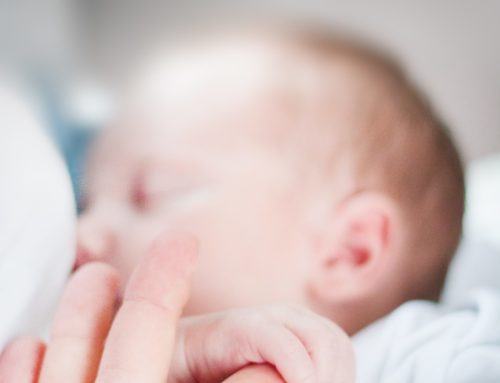Using a breast pump to express breast milk is a prevalent practice in the US. Especially amongst moms who plan to provide breast milk to their baby after going back to work. No doubt that most of my friends, settled in the US, recommended buying a breast pump when I became pregnant. In fact, my cousin (a US resident), gifted me a Medela breast pump as my “baby shower gift”. So I was initiated into owning a pump to express breast milk, even before Anu was born.
Is it necessary to express breast milk?
Expressing breast milk is a matter of choice and circumstances. Many moms in urban India are now exploring the option of expressing milk, especially with a breast pump. Moms who wish to sustain lactation after going back to work, increasingly (but still in small number), opt to pump milk. Click here to evaluate if you need to express milk, or invest in a breast pump for expressing milk.
How I became aware of expressing breast milk
When Anu was born, my GYN explained that expressing milk is essential in case of breast engorgement for avoiding lumps/blocked ducts/mastitis (which may require medical intervention). My GYN, as well as the lectures at my birthing classes, stressed the importance of expressing and storing excess milk in case of oversupply. Not just saving excess milk but if possible to create a reserve for future use, especially if going back to work. A stash of expressed milk, according to my GYN, can be easily saved for 3-4 months and help to sustain breastfeeding longer. In my birthing classes, I was taught not to waste even a drop of “breast milk”, popularly referred as Liquid Gold.
Even before I delivered, my friends shared their experience of expressing milk on a daily basis, some for as long as a year. Regular milk expression ensured their baby had breast milk even when they went back to work. Their journey inspired me to express milk if necessary to sustain breastfeeding.
Why did I start expressing breast milk?
I started expressing milk right from 3rd day after Anu was born and continued to express milk till she turned one year old. I expressed milk at different stages in the first year for different reasons, primarily to:
- Relieve engorgement (1st-3rd month)
- Create a stash for future use (6th-7th month)
- Provide breast milk to baby in my absence (7th-12th month)
- Maintain supply (few days in 10th month )
Express breast milk to reduce engorgement:
Traditionally in India (and across the world), women expressed milk by hand to relieve engorgement. A breast pump is also useful for relieving breast engorgement. However, hand expression is gentler to reduce engorgement.
Two days after Anu was born, I had engorged breasts. My mom taught me how to express with hands. Her technique was gentle, milk started flowing within 1 minute, and the breasts were softer within next 2-3 minutes.
For the next 3 months, I had frequent episodes of fuller or harder breasts which were many times uncomfortable, which meant expressing regularly. But I expressed only when necessary and as much needed to reduce discomfort and make the breasts softer.
Express breast milk only when baby cannot relieve engorgement
Nothing can alleviate an engorged breast like a baby. Anu was fed on demand and from one breast per feeding session. If the breast felt harder and fuller around the feed time, I would express a little with hand to make breast softer for baby to latch well. If I had both the breasts engorged around feed time (happened rarely), I would encourage Anu to feed on both the breasts (latching on the 2nd breast only after emptying the first one). After the feed, I expressed using a pump and empty the breast if not emptied during her feed.
If breasts became uncomfortably fuller in between feeds, and the expected feed time was after at least an hour, I would express enough to make the breast softer. Again, first expressed with hand to make breast softer, then expressed with the pump if needed.
Note: Baby can have difficulty to latch properly on an engorged breast. Always reduce engorgement till breast becomes little softer before feeding baby.
Precautions when expressing breast milk to reduce engorgement
Milk supply works on demand and supply. More demands signals body for creating more supply. When you express milk, your body gets a signal to produce more milk. Expressing is a known way to improve supply. Since I was expressing to relieve engorgement only, I had to make sure I was not overdoing it. In general, if I had engorged breasts around Anu’s feed time, I expressed with hand to make the breast softer and let Anu empty that breast. Only if breast became engorged in between feeds, I would use a pump to empty the fuller breast.
Using breast pump on a hard/engorged breast may damage the breast tissue. Experts recommend to express by hand, in case of engorgement, as it is gentler than a pump or at least express with hands to soften the breast and then use a pump.
Express breast milk to create a stash for future use:
If you anticipate frequent or extended separation (for more than 3-5 hours), building a reserve of expressed milk may be helpful. A stockpile of breast milk can be easily stored for 3-4 months in a freezer. It surely helps to increase breast milk supply to your baby. It also saves you from the hassle of expressing multiple times in a day, especially if you are going back to work.
I had planned to send Anu to daycare when she was 7 months old. She was going to stay at her daycare long enough to need two breast milk feeds. A month before she started her daycare, I started expressing milk to create a stash. She had started her solids around that time and was having one solids meal. I would express approximately at the time when Anu had her food. I chose that time slot to make sure I was expressing at the same time each day to maintain my supply. For creating a stash, I used a breast pump for expressing.
I stored the express milk in sterilised breast milk collection bags.
Express breast milk to feed baby in my absence:
Once Anu started going to daycare around 7 months, she needed mostly 2 breast milk feeds while at daycare. I would express once daily which would suffice for one feed. For other feed, I used the stashed milk.
I maintained my milk supply by expressing daily when Anu was at daycare. I expressed at approximately the same time (and used it next day) when Anu had expressed milk at the daycare.
Also, I pumped on weekends/holidays when daycare was off. Pumping over the weekends ensured I had some reserve of breast milk in the freezer, in case I was unable to pump on any day during the week.
Using breast pump for expressing milk
There are two types of breast pumps available:
- Manual breast pump
- Electric/Battery operated breast pump
Evaluate if you need a pump and what type of breast pump you need here.
Breast pump I used for expressing milk
I used a Medela ‘Freestyle’ breast pump. It is a double collection electric pump (it comes with two sets of pumping accessories so that you can express milk from both the breasts simultaneously). However, I used it to pump from one breast at a time only (never needed to express from both the breasts simultaneously). It is portable and convenient to use, with excellent battery life. It did make a bit of noise while pumping but I could still use it around sleeping baby. The pump has different suction levels, and you can choose the one which is comfortable. It is efficient and could empty my breast in 10-12 minutes.
To relieve engorgement, I used to express first with hands to make breasts softer and then used a pump, if I had to empty the breast (I pumped for around 10 minutes in one session).
When I started expressing to create a stash, and later on, on a daily basis for Anu’s daycare, I used breast pump daily. I expressed for maximum 15 minutes in one session.
My breast pump cleaning routine
It is imperative to clean breast pump parts which come in contact with the breast and breast milk as well as milk collection bottles as per manufacturer’s guidelines. Sterilize the breast pump accessories and reusable collection bottles frequently as recommended by the manufacturer.
Most manufacturers recommend cleaning (and sterilising) breast pump parts before first use.
I would rinse the parts of my Medela freestyle breast pump immediately after use and keep it in a clean, dry place. I never had to pump more than twice a day, and hence my double pumping set would suffice through the day (one set for each pumping session). At night, I would put all the washable pumping parts and collection bottles (if any) in a mild soapy solution (take a few drops of Vim liquid in 1-2 litre of water). Then cleaned all the components thoroughly with hand and washed them with room temperature running water. After washing, I sterilised them by putting them in boiling water for 5-10 minutes (as instructed). Air dried these sterilised parts.
Cleaning and sterilisation took 15-20 minutes daily. Once cleaned and dried, packed all the components with clean hands in a clean storage bag.
Pumping milk is a tedious activity
Expressing breast milk is not an exciting activity. Let me admit, it is boring :-(, especially if you have to express daily. Pumping breast milk comes with an associated routine of cleaning and sterilisation. However, during the period of separation, I preferred giving expressed milk rather than formula. Since expressing milk is a great way to sustain breastfeeding for your baby, you have to keep going at it. If expressing frequently, a breast pump is one of the most useful accessories.
Once Anu turned 1, we gradually introduced her to cow’s milk. She continued to breastfeed, but no more pumping milk. I sent cow’s milk to her daycare. I was happy to pack and store the breast pump :-).
How I stored expressed breast milk
It is essential to save expressed milk in a sterilised container. Breast milk is prone to contamination. So it is crucial to maintaining hygiene around collecting, storing and using expressed breast milk. You can read more details about storing breast milk here and here.
I used Medela’s or Lansinoh’s sterilised milk storage bags if I was not expressing milk for immediate consumption. Medela bags fit directly with the Medela pump while expressing, eliminating the requirement of using a collection bottle. The milk storage bags come with a feature to label date and amount of expressed milk. Such labelling is very useful when you create a stash. I stored these bags in the freezer for max three months.
When expressing for immediate consumption (within 24 hours of expressing), I used Medela’s feeding cum storage bottle. No separate collection bottle needed since these bottles attach to the pumping accessory. I stored the bottles in the fridge, at the back, for max 24 hours. I used the same bottle for feeding by inserting a nipple into the bottle’s cap.
Sterilised steel containers are also an excellent and economical option for storing breast milk. I wish I had explored that option.
Useful tip: If storing milk in storage bags in a freezer, lay them flat. This way you can save more bags in same space instead of keeping them vertically.
How I used expressed breast milk
Here is a detailed guide to use expressed breast milk.
When using breast milk stored in the freezer, I would take out the oldest batch first (did not use/stash milk in the freezer for more than 3-4 months). I would take out the bottle or storage bag and hold it under running tap water for 1-2 minutes. If the stored milk were for immediate consumption, I would put the milk container in warm water for few minutes. If it were for daycare or feeding in next 3-4 hours, I would let it stand for 10-15 minutes (to thaw partially). Then transfer the partially thawed milk in a feeding bottle and keep the bottle in an insulated bag.
Anu’s daycare providers co-operated actively to feed her expressed milk. They would transfer the expressed milk sent in an insulated bag in the fridge. They thawed/warmed it by placing the bottle in warm water, just before feeding Anupama.
If I stepped out with Anupama for short duration (2-3 hours) and expected a feed when outside, I would carry thawed milk or freshly expressed in an insulated bag. The insulated bag kept the milk fresh for more than 2-3 hours. If we were travelling, I would carry freshly expressed or thawed milk in an insulated carry bag with an ice pack (I got an insulated bag with ice pack along with my breast pump). I could feed her milk after as long as 5-7 hours. Just had to take the bottle out from the insulated bag 15-20 minutes before Anu’s feed.
Useful tip: When using expressed milk, gently swirl the container before feeding. Swirling ensures fat in the milk, which separates during storage, mixes well.
Precautions when using thawed milk
I observed following precautions when feeding expressed milk to baby:
- Never refreeze thawed breast milk
- Never heat breast milk in a microwave or on a direct heat source
- Taste/smell breast milk before feeding a baby
- Refrigerate unfinished milk from the feeding bottle and discard if not used within 1-2 hours
For details about precautions to be followed when giving expressed/stored breast milk to the baby, click here.
Feeding expressed breast milk
Using a bottle to feed a baby is a debatable topic. Most paediatricians discourage use of feeding bottle beyond 1 year of age. However, a feeding bottle is a convenient (and a habit-forming) option, when the baby is not feeding at the breast.
I used feeding bottles to feed expressed milk to Anu. In the first 7 months, I rarely used a bottle, only if I had to step out and someone at home fed her in my absence. Once Anu started daycare, she used to have expressed milk in her feeding bottle. I stopped giving her expressed milk after she turned 12 months old. Around the same time, Anu started having milk (cow or expressed milk) in a straw bottle. Fortunately, she gave up feeding bottle easily (no protest to use a straw bottle).
Many Indian moms prefer to give expressed milk with a bowl and a spoon. Or once the baby is 7-9 months old, they train their baby to use a glass for drinking milk. Around 10 months we gradually introduced glass for drinking liquids. From 15 months of age, Anu has her milk from a straw bottle or glass.
In Conclusion
Expressing breast milk, and associated storing and cleaning, requires time, patience and some monetary investment. Initially, I expressed enough to relieve engorgement. Once Anu started her daycare, I preferred giving expressed milk over formula, in my absence. So I regularly expressed since Anu was 7 months old till she became 1 year old. It was a tedious activity, but I am happy I could sustain breastfeeding my baby girl. She continues to feed on demand but only when we are together.





Hi Anu,Thanks for the detailed right up.I am planning to create stash for my 5 months old son.I really want to avoid plastic so curious about you mention of storage in steel container..can we freeze BF in steel container..can you please provide some leads …TIA
Hi Uma,
Yes you can freeze BM in steel containers (my paed recommended it, do check with your paed). Just ensure that it is thoroughly washed and sterilize before using it. Use a food grade steel container if possible. Buy smaller steel containers, preferably so that you can thaw the amount as needed. Or you can opt for hard glass containers also if you want to avoid plastic.
Hi Anu,
I really thank you as your details clared most of my doubts.
My baby is 2months old. And i want to continue breastfeeding him till he completes one year. I have a query for how many hours we can keep the expressed breast milk at room temperature. I am little skeptical because in india pollution is more. So contamination occurs soon. So in that dilemma i don’t go out even if i have work. And if keep the milk in refrigerator, I need to take it before 10 to 20mins is it to bring it to normal temperature, is it ??
Please reply.
Thanks & Regards,
P. Swarna
Depends on where you live. And are you keeping freshly pumped milk or previously stored milk. In hot climate keep, freshly pumped BM can be out for around 60 minutes. If it is cold, like in winters, you can easily keep it out for 2-3 hours. Also depends on do you have temperature control. If yes, maintain a temp of around 22-25 degrees Celsius and you can keep it out for 2-4 hours depending on your climate.
When keeping it out, keep in a bottle or any clean container with a closed lid. That should avoid instant contamination.
If the BM is refrigerated, keep it out for few minutes. You can put it in a bottle and hold the bottle under running tap water (tepid or room temperature) or swirl it in a vessel with water at room/warm temperature. Hope this helps.